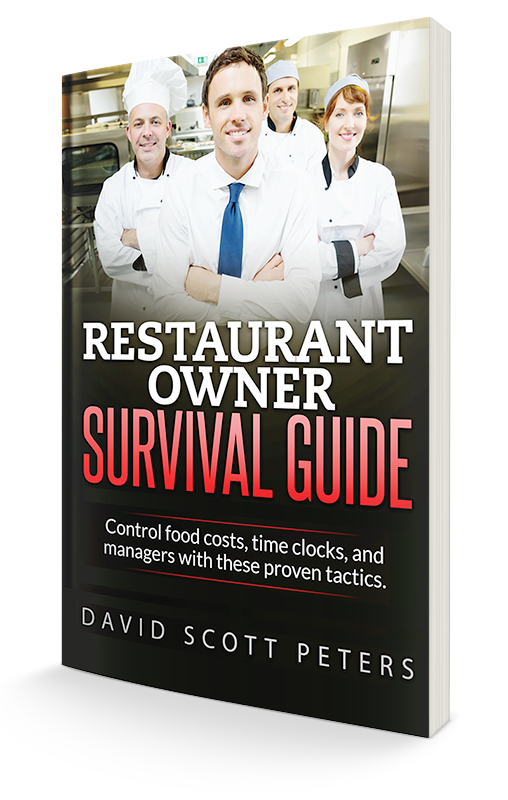How to Schedule Enough People with Certainty
How many times have you asked your management team if they have enough people hired to fill the schedule and they waved you away with an impatient, “yes”? But the next thing you know your managers are running around like chickens with their heads cut off because someone quit, got fired, went to jail or just plain disappeared — and lo and behold you’re short staffed.
Sound familiar? We’ve all been there. Why? Because young managers don’t understand what it really means to be fully staffed vs. just having enough people to cover shifts.
Determining how many is enough
So how many employees is enough? To figure that out, you first have to understand what an FTE is.
FTE stands for “full-time equivalent,” meaning how many people it takes to equal one full-time person. For back-of-house staff, such as cooks, dishwashers, etc., one FTE equals 40 hours. If you have two part-time cooks who both work 20 hours a week, together they equal one FTE. So for every back-of-house employee who can work 40 hours, they equal one FTE.
For front-of-house staff, such as servers, hosts, bussers, runners, etc., one FTE equals five shifts. If you have two part-time servers — one who can work three shifts a week and one who can work only two shifts a week — that’s five shifts and together they equal one FTE. The reason to use shifts and not hours for front-of-house is most restaurants have servers who will never work a total of 40 hours a week, even if they work all seven days. Every front-of-house employee who can work five shifts a week equals one FTE.
OK, now that you know what an FTE is, what do you do with that knowledge and how do you apply it?
Simple: look at your staffing guide (also known as a staffing key). Here’s an example:
The exhibit above is a typical server schedule. Let me draw your attention to the bottom of the schedule, to both the AM and the PM rows. As the week goes on you’ll see AM 2 and PM 3 for Monday. This means you need two servers on the floor to handle the $500 you are expecting to do in business for Monday’s lunch and three servers to handle the $1,500 for dinner. This guide tells you how many people you need each shift to handle the forecasted sales for each day.
Now take a look in the bottom right corner of the exhibit to find FTEs equals 8.6. That number comes from adding up the total number of shifts in the staffing guide and dividing that number by five. This tells you the bare minimum of staff needed on your master schedule to staff your restaurant.
But there is a twist. I want you to have two FTEs more than you need in all departments. This way when you lose a person in any department, you’re never understaffed. (I’ll explain this further. Keep reading.)
The exhibit below shows how the same process is used for the cooks’ schedule. However, in this example, we total up the hours to be worked and divide that by 40 to determine how many FTEs we need to fill that department.
See, this is not so difficult.
Two FTEs more than you need
To know if you have enough employees, all you need to have in place is a master schedule by department. Let me show you what I mean:
This is what a server master schedule looks like. A master schedule is written for each department to help ensure that the scheduling process is efficient and effective. And for purposes of our discussion, it helps you know the answer to that very important question: “Do you have enough people?”
Remember back when I showed you the staffing guide for the server schedule? After dividing the total shifts by five, it shows you need 8.6 FTEs just to cover the shifts. Then I told you I wanted you to have two more FTEs than you needed, which in this example would be approximately 10.6 FTEs. (For your back-of-house department you would add up the total hours to be worked and divide it by 40 to determine how many FTEs you need, compare it the master schedule, etc.) Look how easy it is to determine if you have enough staff.
Your staffing guide, plus two, says you need 10.6 FTEs to not only cover the shifts you need, but to avoid being short staffed when you lose a server. Now look at the outside right margin where you write how many shifts each server wants to work a week. (Do this because sometimes you have people who only want to work part time, but are available seven days a week.) Total up the number of shifts all of the servers are available to work, divide that by five and compare it to your staffing guide’s required FTEs. In this example, the staffing guide says you need 8.6 FTEs and your server master schedule says you have 8.8 FTEs.
At first glance any manager would say, “Yes, we have enough people.” But the reality is that you actually do not have enough people because you need 10.6 FTEs. Remember those people who don’t show up for whatever reason and requested time off? When you have two FTEs more than you need on your master schedule, you’ll be able to handle the scheduling challenges that come your way and will no longer get caught with not enough people to run your restaurant effectively and efficiently.
IMPORTANT SIDE NOTE: Make sure you have people who can be scheduled on your busiest days of the week. You could have enough FTEs based on the math, but most of them might not be able to work Friday and Saturday nights and then you’ll still be short staffed.
Two more than you need in all departments?
The short answer is, “Yes, you can.” But you’ll have to get creative. For many positions, such as bussers, hosts and bartenders, there are often not enough shifts or hours to go around, let alone enough to carry two more FTEs on the master schedule than you need. So what do you do? Simple: cross train.
All new servers are told that as a part of their new position, they may from time to time be called upon to host, bus or fill the role of dishwasher. They are cross trained and a few servers are trained to bartend, etc. This way you always have two FTEs in every department.
Many restaurant owners and managers will argue initially with me that you can’t carry two FTEs more than you need in the kitchen because they need the hours. The reality is it’s not difficult at all. Hire two FTEs more than you need on your cook master schedule. Then schedule your cooks for 35 hours a week. That’s still full time. Then when you lose a cook or one takes time off, adjust your cooks’ schedules to 40 hours a week. That way you don’t have to pay overtime and have enough people to cover without your managers scrambling. Bonus is you fill the shifts with trained cooks, not the new guy who just walked in off the street that got a job because you were short staffed.
Now you know
So the next time you ask your management team if they have enough people, you don’t have to take their word for it. Look at the master schedule and schedules for each department and compare FTEs. Don’t waste another minute… implement these two systems, make more money and sleep well knowing you have enough people to staff your restaurant.
Please note that in SMART Systems Pro, our online restaurant management software, you only have to create the Master Schedule and the Staffing Guide once and then after you complete your first Schedule you have the ability to copy it over from week to week, changing as needed. It’s just one tiny example of how much easier SMART Systems Pro makes running your restaurant.







